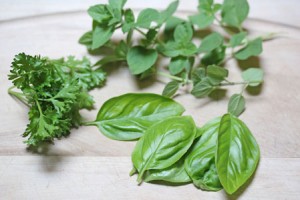 February is National Heart Health Month. In addition to exercising, it is important to watch what you eat to keep your heart healthy. One of the most important things you can do is to limit the amount of salt (sodium) that is in your diet. Salt contributes to high blood pressure (hypertension) and limiting salt intake can help control blood pressure and reduce the amount of work your heart has to do to move the blood through the body.
February is National Heart Health Month. In addition to exercising, it is important to watch what you eat to keep your heart healthy. One of the most important things you can do is to limit the amount of salt (sodium) that is in your diet. Salt contributes to high blood pressure (hypertension) and limiting salt intake can help control blood pressure and reduce the amount of work your heart has to do to move the blood through the body.
The idea of limiting salt may sound difficult or tasteless, but there are simple things that you can do to lower the amount of salt in your diet without compromising taste. The simplest way is to eat fresh, whole, unprocessed foods when possible and to use these preparation methods for cooking:
- Â Steam or stir fry-vegetables retain their vitamins when prepared this way.
- Â Bake, broil, grill or roast meats and vegetables. Herbs and spices can be used as rubs or sprinkled on to foods to add flavor without adding additional salt.
- Poaching-this is cooking in a hot liquid (usually water) and keeps meats moist and tender.
Rather than reaching for the salt shaker try adding herbs and spices to add natural flavors to foods when using these cooking methods. Many herbs and spices contain additional health benefits like vitamins, fiber, digestive enzymes and anti-inflammatory properties as well. Try adding fresh dill, cilantro, parsley, fresh lemon juice, or rosemary to meats and vegetables when preparing. Cinnamon, basil, mint and cilantro can be used to add a flavorful twist to many fresh fruits. Add herbs to olive oil and red wine vinegar to create flavorful marinades and dressings for salads. Be creative and try new pairings and flavors.
One of the most important things to do when trying to limit salt intake is to read the labels on the packages of food items that you buy. Most of the salt people get in their diets is from prepackaged and processed foods. Processed foods almost always contain very high amounts of salt. That is what keeps these foods preserved. Look for items that are low-sodium or no sodium. Use the Percent Daily Value (%DV) to Compare Products. The %DV tells you whether a food contributes a little or a lot to your total daily diet. 5%DV (120 mg) or less of sodium per serving is low. 20%DV (480 mg) or more of sodium per serving is high (1). The Dietary Guidelines for Americans (DGA), 2010 recommend reducing sodium intake to less than 2,300 milligrams (mg) per day. The DGA also recommends further reducing sodium to 1,500 milligrams (mg) per day if:
- Â You are 51 years of age or older.
- Â You are African American.
- Â You have high blood pressure.
- You have diabetes.
- Â You have chronic kidney disease.(2)
A low sodium diet and physical activity go hand in hand in keeping individuals heart healthy. It is not uncommon for individuals with hemophilia to develop high blood pressure later in life. Start taking the steps to help prevent these conditions from occurring in your life. Ditch the salt and “spice” up your life!
**While extensive efforts are made to ensure accuracy of the content of each FitFactor post, these entries are not intended to be construed as medical advice or the official opinion/position of HFA, its staff, or its Board of Directors. Readers are strongly encouraged to discuss their own medical treatment with their healthcare providers.
References:
(1) http://www.fda.gov/Food/ResourcesForYou/Consumers/ucm315393.htm
(2) http://www.cdc.gov/bloodpressure/sodium.htm
Photo credit: www.fitnessbypatty.com



